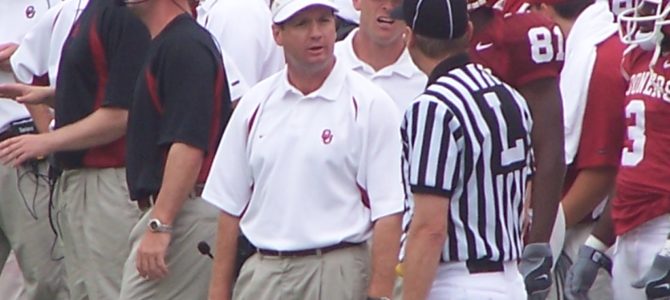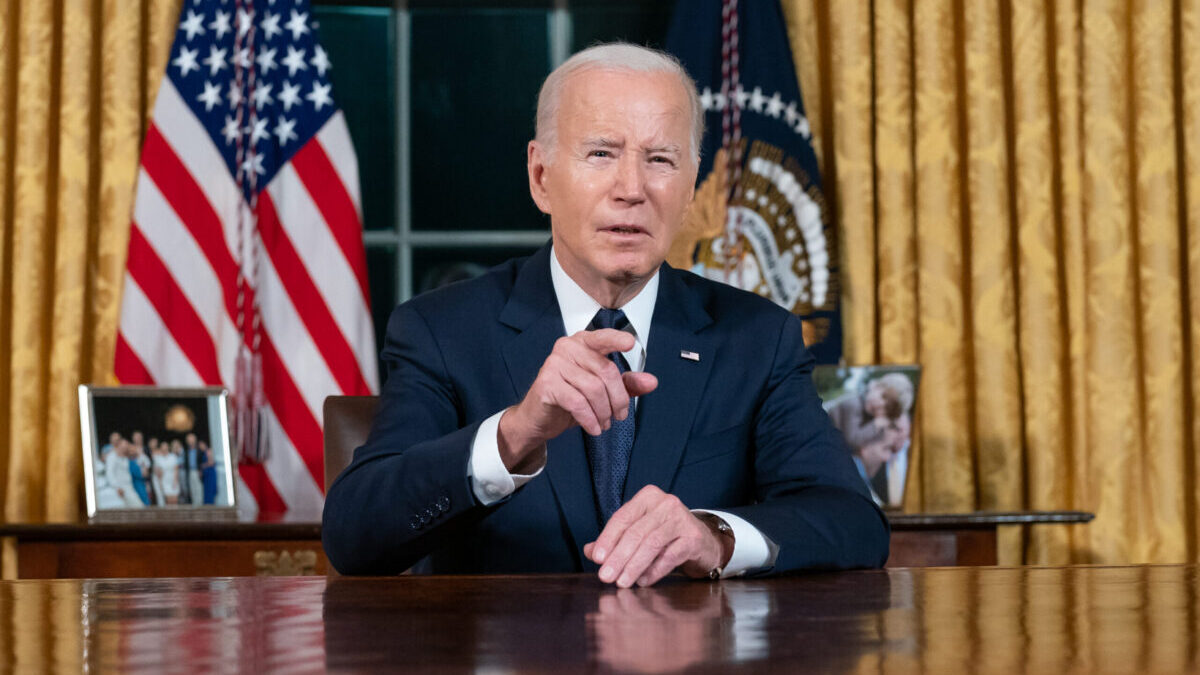
University of Oklahoma Sooners head coach Bob Stoops, the longest-tenured coach in college football, suddenly announced his retirement yesterday. Stoops, aged 56, is the winningest coach in OU history with a 190-48 record. He took the Sooners to four national championship games, winning in 2000, and bringing OU back to the prominence the program once enjoyed.
I went to high school in Tulsa, Oklahoma, a hotbed of OU fandom. Oklahoma’s high school football programs may not be as well-known as those from Texas, but they are just as serious and competitive. The team Stoops took to the 2000 national championship included many players from my high school, which has won 16 class 6A state titles including every year from 1996 to 2001. As an alumnus of the University of Texas, I both loathed and respected Stoops for the consistently tough teams he churned out in Norman.
Stoops had a knack for winning the big games, even when stumbling against lesser opponents. This earned him the nickname “Big Game Bob.” His teams won ten Big 12 titles in his 18 years at OU. His production of high-caliber teams nearly each year of his tenure brought Oklahoma back into the upper echelon of college football, and made it a consistent powerhouse in the Big 12.
A Stabilizing Force in the Big 12
Stoops’ tenure was not without controversy. In 2007 the NCAA put his team on probation after two players tried to receive payment for work they did not perform at a local car dealership. The university self-reported the violations, and upon a review a year later, many of their penalties were reversed.
Oklahoma under Stoops and Texas under Mack Brown produced some of the best rivalry games of the early twenty-first century, meeting each season in the Red River Rivalry played at a neutral site in Dallas halfway between each school. The winning team often went on to take the conference title, and had the inside track for the best post-season bowl games.
Both schools and their coaches were also the stabilizing forces in the Big 12, keeping the conference together as a series of realignments beginning in 2010 saw the growth of the Pac 10, Big 10, and Southeastern Conference. The Big 12 lost schools to each of those conferences, but OU and Texas were able to keep the conference from dissolving. With the departure of Brown at Texas in 2013, and now Stoops’ retirement, the future of the Big 12 may be in doubt.
Texas is still trying to find its post-Brown identity with new coach Tom Herman, and if OU’s replacement for Stoops, the 33-year-old Lincoln Riley, is unable to maintain the same level of success as his predecessor, it may be a bad sign for the conference. Texas and OU are the pillars of the Big 12, drawing the most media attention, viewership, and prestige. Their success is an important bargaining chip when the conference sits down with providers to hash out multi-million-dollar TV contracts.
The Big 12 has weathered some significant scandal in the last several years with the revelations that Baylor’s football program covered up atrocious behavior by its players, including the alleged rape of several women and discouraging the reporting of such incidents. Baylor had suddenly become a winning force in the conference under Art Briles, but the now-fired head coach seemed to win at the expense of the program’s credibility.
This has understandably hurt the conference’s reputation. Without the success of the conference’s powerhouse programs, the long-term viability of the Big 12 could be threatened. If the conference does collapse in the next few years, look for the big guns—Texas, OU, and Oklahoma State, plus perhaps Texas Tech and TCU—to head to the PAC 12, while the other schools scramble to join the Big 10 or SEC.
Why Did Bob Stoops Retire So Suddenly?
Retiring at this point in the year is a rather odd move for any head coach. Most coaches retire at the end of a season, not in the summer. Stoops’ father, who was also a football coach, died at the age of 54 from a heart attack he suffered during a game, so initial speculation centered on a potential health problem. However, in a press release yesterday, Stoops said, “My health was not the deciding factor in this decision and I’ve had no incidents that would prevent me from coaching.” As source within the program echoed that assessment to me saying, “It’s definitely not his health. He just believes it’s the right time to leave.”
Interestingly, Stoops and his wife just purchased a $2.25 million home in Chicago’s swanky Gold Coast neighborhood. Their new purchase happens to be next door to a home they have owned since 2006. The mansion, built in 1886, has “a greystone facade, 5½ baths, an elevator, a sunroom, a fourth-floor media room, a south-facing wall of windows, two fireplaces, stone baths and an au pair space on the lower level.”
Although Stoops said in his statement that he will remain in Norman, and will serve as a special assistant to the program, his new purchase in Chicago may indicate otherwise. He has, after all, been a constant target of National Football League teams over the years. At his goodbye press conference at OU last night, Stoops didn’t fully close the door on his future, saying, “We’ll see what floats my way.” Could his expanded investment in Windy City real estate indicate that Stoops would be interested if the Chicago Bears look to replace John Fox, their current head coach?
Stoops made the Sooners a force to be reckoned with in college football. All Sooner fans, including my father, will miss seeing Coach Stoops on the sidelines this fall. Whether you loved or hated him, Stoops was undeniably one of the best coaches in the last 20 years of college football. His vast coaching tree and winning record will ensure that his legacy is felt for years to come.









